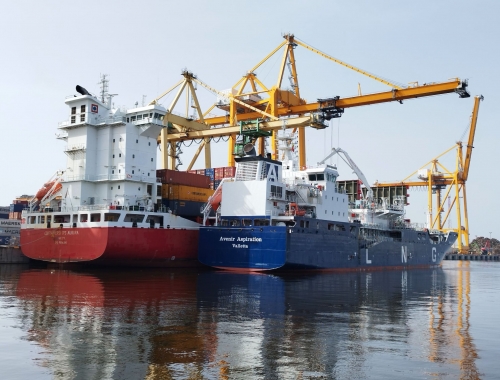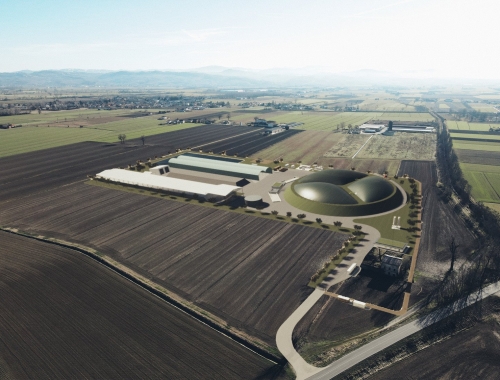EU looks to biomethane to curb Russian gas supplies
SUMMARY
Under the commission’s REPowerEU plan, biomethane would replace about a fifth of current Russian gas supply by the end of the decade.
By Joseph MurphyPOSTED IN:
The European Commission’s REPowerEU plan to make the EU independent of Russian natural gas within a decade primarily will involve ramping up imports from alternative suppliers and drastically lowering demand. The plan does not call for an increase in indigenous natural gas production, but it does stress the need for local biomethane supply to play a greater role in the EU energy mix.
Specifically, the commission calls an increase in biomethane production to 35bn m3 annually by the end of the decade, which would replace around a fifth of current Russian natural gas supply. This is up from about 3bn m3 currently, and under the plan, output should be doubled this year alone.
Not only is the commission’s 2030 target for biomethane supply realistic, but it represents only the minimum amount of sustainable biomethane production that could be brought on stream within a decade, Angela Sainz Arnau, communications manager at the European Biogas Association (EBA) tells NGW.
“This includes only sustainable feedstocks, including food waste, agricultural residues, wastewater, sequential crops and livestock manure,” Sainz Arnau says. “The EBA is already analysing the specific potential per member state and discussing with national members and EU officials to develop a detailed plan towards the 35bn m3.”
Policy changes
However, Sainz Arnau says EU policy needs to improve to support biomethane development. It wants to see the commission’s 2030 target included in the recast of the Renewable Energy Directive, which sets rules and targets for developing green energy sources. The legislation should also ensure clear terms for developing guarantees of origin, which show consumers how clean their energy is, in order to facilitate biomethane trade, Sainz Arnau says.
In addition the EU’s Gas Package, a group of legislative proposals published by the commission last December to decarbonise gas markets, should support the injection of biomethane into the grid, Sainz Arnau says. And the EU’s taxonomy for what should be considered sustainable investment should fully recognise the contribution of anaerobic digestion to producing sustainable energy.
.png) Regarding transport, the EU has faced criticism from the biogas and natural gas industries for focusing too much on tank-to-wheel emissions, or in the case of ships, tank-to-wake emissions. That is, only the emissions produced when the fuel is used. This approach favours for example electric vehicles, which emit no CO2 when they are driven, ignoring the emissions that may have been produced when the power they run on was generated. It meanwhile puts biomethane at a disadvantage.
Regarding transport, the EU has faced criticism from the biogas and natural gas industries for focusing too much on tank-to-wheel emissions, or in the case of ships, tank-to-wake emissions. That is, only the emissions produced when the fuel is used. This approach favours for example electric vehicles, which emit no CO2 when they are driven, ignoring the emissions that may have been produced when the power they run on was generated. It meanwhile puts biomethane at a disadvantage.
“Lifecycle emissions should be considered,” Sainz Arnau says. “EU legislation should accelerate the deployment of all renewable and low-carbon options and their related technologies, such as internal combustion engines.”
Recent market developments have also strengthened the economic case for biomethane. Soaring natural gas prices over the last six months have meant that at times, biomethane is a cheaper alternative. The EBA estimates the current cost of producing biomethane at €55 ($60)/TWh, whereas the price of natural gas futures on the Dutch TTF hub currently exceeds €100.
Decarbonisation
Defending biomethane further, the EBA stresses the EU’s need to decarbonise as quickly as possible, and in a way that is cost-effective.
“Using existing infrastructure to deploy biomethane is an advantage, as it entails a reduction of costs,” Sainz Arnau says. “87% of biomethane plants are already connected to the gas grid, making a significant contribution to decarbonising gas grids. The use of renewable gases through gas infrastructure would save €217bn/year. A certain level of investment will still be needed to deploy new infrastructure.”
Critics of biomethane have often pointed to the issue of methane emissions leaking out of infrastructure, given its potency as a greenhouse gas.
“The share of methane leakage in the biogas sector is extremely low and we believe that it is feasible, with regular monitoring and control, to keep these emissions below 1%,” Sainz Arnau says. “The sector has made considerable investments to ensure technological progress and reduce methane leakages to a minimum. Different member states have also implemented voluntary monitoring schemes to monitor and avoid the risks of methane leakages in the past years.”
Innovations
While other low-carbon technologies are only just arriving, biogas technology is already mature, existing in Europe for over a decade already. It can also be scaled up without changes to the technology, and there are innovations underway that can further boost production, Sainz Arnau says.
These innovations include the larger-scale processing of feedstocks such as algae and seaweeds, developments in the gasification process to produce more biomethane from woody materials, advancements in pre-treatment technologies that lower investment costs, and gas grids allowing reverse flow, which enables more biomethane to be injected. Biohydrogen is another emerging field of technology that could bolster the role of biomethane on the road to decarbonisation.
Sainz Arnau adds that achieving optimal temperatures for bacteria to digest feedstocks and produce biogas is “not a large hindrance.” Small-scale biogas combined heat and power plants can be used to heat reactors, while the rest of the biosupply is upgraded to biomethane and delivered onwards.
This feature first appeared in the May issue of NGW's Gas in Transition magazine. To read more NGW content, click here.






